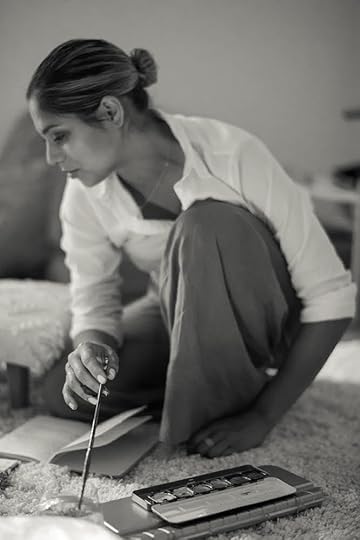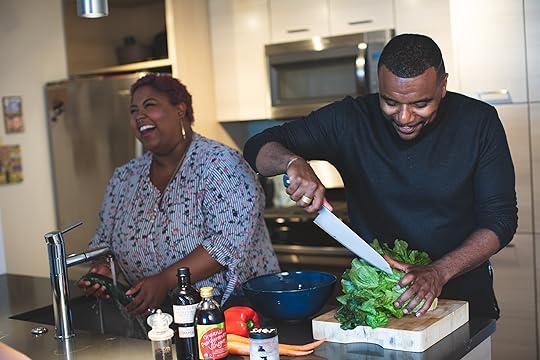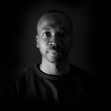Kern Carter's Blog, page 145
July 8, 2020
Simon and Schuster has a new lead Publisher — Dana Canedy
Simon and Schuster have found someone to lead its famed publishing house and her name is Dana Canedy. Canedy has been named senior vice president and Publisher for Simon and Schuster and will begin her duties on July 27.
Canedy has never worked in publishing but has been a New York Times reporter and editor for 20 years and most recently worked as an administrator of the Pulitzer Prizes. She’s also written a book titled, A Journal for Jordan, which is being adapted into a movie starring Michael B. Jordan.
This is one of the most prestigious jobs in the publishing industry. in the NYT.

Simon and Schuster has a new lead Publisher — Dana Canedy was originally published in C.R.Y on Medium, where people are continuing the conversation by highlighting and responding to this story.
July 6, 2020
Tiny Beautiful Wins
July 4, 2020
Kofi Frempong — the artist who couldn’t paint [interview]
July 3, 2020
Hear me, Please.
How I deal with not being heard by others because I thought I had no voice.
July 2, 2020
Who are we doing “this” for?
 Photo by Gift Habeshaw on Unsplash
Photo by Gift Habeshaw on UnsplashI scrolled through my Instagram at least 20 times in a 2 hour period the first day I curated social media presentations in celebration of Black Music Month. Naturally, the lack of engagement on the part of my followers disappointed me initially. I would grow excited and anxious in my preparation to share why music can socio-politically mobilize people and why I am stan for someone like D’Angelo.
“I am so thrilled to share this with y’all!”
My thrill evaporated and it rained small disappointments that sounded like my insecurities.
“My passion for Black music history is relatable to some, but no one is required to share the same interests or love for it as me.” I whisper those valid, yet painstaking sweet nothings to myself as I press the “post” button.
How many likes will I get? Who will comment? Am I using the right hashtags?Questions and worry swarmed the happy feelings I had when I gathered the posting materials, but why?
The level of zeal I have for Black music and culture is not an interest I feel I can put on the backburner until however many people are watching me, validating me. Constantly, when sharing my creative interests with the world I must examine my ability to separate my being from my work, but this also requires that I investigate why I feel the need for validation, attention, and/or acknowledgment with something that started out as a hobby.
None of those considerations are simple. There isn’t anything inherently wrong with wanting an engaging audience or fan base. When I begin digging deep to answer these questions, I find the childlike me that wants love and attention. I discover the independent, “I don’t want no boss” me that wants to make a career out of this. The me that yearns for other people to be impacted by what I do reveals itself.
Surely, the latter aspiration is something others feel.Many of us, creatives, may start our journey’s creating with the interest of resurrecting ourselves from some sort of emotional or mental calamity, or simply because it is what brings us joy. Whatever the reason, I am learning about who I do “this” for and why I do “this” daily. Unearthing that returns me to a place of gratitude about my journey as a creative.
Manifestation and mental awareness are all the more pertinent through this trek since this journey is also about the people that look to creative’s work.
Those two instruments for growth are very real. A positive, realist mental state, of course in coalition with work, has led to far more opportunities than the fear of never growing or the paralysis that accompanies lacking perspective on my current impact.
I see what my adoration for music does to other people. It has the capability of fueling their curiosity and empowerment.When one is cognizant of this what their work does, the focus shifts from the numbers (how many people are watching) to manifesting what one already knows to be true: that no one is going to approach the creative process like you, so you may as well present your work as you, at all times. You may as well pin down why you do what you do and who you do “this” for. Make that the centerpiece of your work.
I do “this” for me, first. I do “this” for everyone who is open to learning.
I do “this” because I value the work of musicians, poets, artists, and all the folks who don’t do none of that.
Creative work, while connected to me, is merely a tool for my higher purpose.
Who do you do “this” for and why?
As an extra tidbit, one of my favorite artists Markus Prime, an NSFW comic illustrator, discussed why you should just go ahead and shoot your shot on your dreams no matter who is or isn’t watching.
https://www.instagram.com/tv/CCHi5PwFPq5/?utm_source=ig_web_button_share_sheet

Who are we doing “this” for? was originally published in C.R.Y on Medium, where people are continuing the conversation by highlighting and responding to this story.
July 1, 2020
Too Much Information?
June 30, 2020
Get ready for Sarah Minacs — the most exciting emerging artist in Toronto [Interview]
Sarah Minacs is ready to for the art world, but is the art ready for her?
June 29, 2020
Call for submissions — How do you deal with not being heard?
For me, one of the most emotional parts of being an emerging creative is feeling like no one is listening. You put hours into an article, weeks into a painting or photo or years into a book without any real kind of audience.
That sense of sending your work out into the abyss can suck the life out of you.
So let’s talk about it. How do you deal with putting all this effort into your creativity without having a significant audience? Do you get down on yourself? Does it motivate you to create better work? Is there a time limit you’re giving yourself to build what you would consider a significant audience?
Same rules as always:
If you’re already a writer for CRY, go ahead and submit.If you’re not a writer for CRY but would like to submit to this request, let us know and we’ll add you ASAP.Just because you submit doesn’t mean we’ll post. If you haven’t heard back from us in three days, consider that a pass.Deadline for submission is this Thursday, July 2.I’m excited about all of our submission requests, but this one I’m particularly interested in. Please reach out if you have any questions at all. If you are new to Medium, here’s how you submit a draft to a publication.
CRY

Call for submissions — How do you deal with not being heard? was originally published in C.R.Y on Medium, where people are continuing the conversation by highlighting and responding to this story.
June 27, 2020
IN CASE YOU MISSED IT — Our Interviews with editors
CRY has been fortunate enough to interview some incredible editors. We’ve spoken about publishing, the indie author industry, and did an entire series on what it means to formulate an opinion in a time where everyone with a WiFi connection has an opinion.
ICYMI, here are all of the interviews we’ve conducted with editors.
Kayla Greaves from InStyle Magazine Olivia Taylor Smith from Unnamed Press
Olivia Taylor Smith from Unnamed Press Vanessa K. De Luca from ZORA Magazine
Vanessa K. De Luca from ZORA Magazine Janine Vangool from UPPERCASE
Janine Vangool from UPPERCASE Fawn Parker from Bad Nudes
Fawn Parker from Bad Nudes Terese Mason Pierre from Augur Magazine
Terese Mason Pierre from Augur Magazine Victoria Bevilacqua from PAPER & COIN Magazine
Victoria Bevilacqua from PAPER & COIN Magazine
Don’t forget to follow CRY on Instagram @wecrydeep

IN CASE YOU MISSED IT — Our Interviews with editors was originally published in C.R.Y on Medium, where people are continuing the conversation by highlighting and responding to this story.
June 23, 2020
Paintbrushes & Microscopes: From Harvard to Creative Entrepreneur
 Advice to early stage creatives: “Look at the story of the entrepreneur, more than the story of the traditional artist”
Advice to early stage creatives: “Look at the story of the entrepreneur, more than the story of the traditional artist”
While not all entrepreneurs are artists, all artists should be entrepreneurs according to Evelisa Natasha Genova.
For the Harvard graduate, painter and podcast host, the business of art is one she approaches with the same grit and hustle as a startup founder launching their next culture shifting idea.
First picking up a paintbrush at a very young age, she never imagined a career as a painter. “I was always drawing, but I also had a microscope and I loved science,” she tells CRY, “My inner child happens to love science and is connected to art. I am intrinsically motivated to keep that with me to this day. I didn’t think of myself as an artist. I actually wanted to be a paleontologist.”
Today, her visual art career has provided her with the opportunity to travel the world working with clients from Mumbai to Los Angeles and host her Stories of Life & Live podcast, interviewing notable figures in art and business.
Here she shares why establishing a thriving career in art is not just about inspiration and idea creation, but in adopting an entrepreneurial mindset.
Discipline is where creativity unfolds
“I am not a moody artist. I don’t base creation on my mood, feeling or inspiration. I know that can sound challenging because there’s a bit of a story or myth about ‘the artist’ but I actually resisted that from a very young age.
I always valued rigor, hard work and challenge; so even to this day, I’ve built up a business model around my art. I am painting because I commit to it. It’s through that commitment to the work where all of the creativity unfolds. But my decision making and my time management is not creative, it’s very structured.”

Don’t put yourself in a box.
“I worked for a number of years in government relations, negotiations and political advocacy. In that world, I really minimized or just did not want to have art as part of how I showed up in that world. It was sort of a secret part of life that I had. You know, I was moonlighting as an artist.
This is a bigger reflection of my own spiritual journey, but I think I judged and internalized my heart centre and leading with my heart. My heart happens to be creativity. My heart happens to be about working with young people and children. I judged it all because of my own internalized perspectives; I struggled with that. I was trying to force myself to be something that I am not.
I never wanted to be put into a box — I never liked the negative associations that came with art so I somehow thought that if I showed up in the world saying that I am a painter, I cared what people think. I would think to myself, “I’m much more hard working and intellectual than that, so please don’t think of me that way.” But now I just think, we are multifaceted human beings. I don’t feel the anxiety of being put into a box anymore because my life and my efforts reflect my values of being hardworking and ambitious.”

Take on the mindset of entrepreneurs.
“Look at the story of entrepreneurs, more than the story of the traditional artist.
I think the story of the entrepreneur and the strategies that entrepreneurs use will be more helpful, more grounded and strategic than anyone else who’s following their passion. Even if their passion happens to be creative pursuits. In fact, you will hear entrepreneurs being so passionate and successful about things like selling socks online. You just need to have that entrepreneurial mindset and let go of any false notions of the artist mindset.
Which by the way, that’s only in recent history — from the romantic period onward, there was this myth of a tortured artist soul. But historically, speaking about the Western world, artists were an important part of the economic fabric of society and it would be considered as viable a position as anything else. That’s just reflective of the time. So I think if you look at the story of the entrepreneur, the challenges and resources that entrepreneurs use, then that can be super helpful.
I also recently interviewed on my podcast, this venture capitalist Patrick J McGinnis who is also the author of The 10% Entrepreneur. I asked him to give some specific advice to creatives. He’s in the Venture Capitalist world and he started that expression FOMO — he’s literally the founder of that. He had some amazing advice on how to have a bridge job or be working and be 10% entrepreneurial and slowly transition to 100%. In our interview, he gave really great advice to creatives and artists.”

Keep your day job (for as long as possible)
“Being a former employee allowed me to have no pressure with my skill set, my passion and my talent. I think that’s really important because it allowed the growth to come very naturally. I didn’t have an agenda. I did not set out to become a painter per se, so I actually do put a lot of value in being self reliant (especially as a woman in our society). Be self reliant, have a good sense of money management, be an employee and let your talent grow. Take risks that your life doesn’t depend on; initially anyway.
From there, it organically grew, and I was able to learn what people really desired from me in my strengths. Then I used a lot of entrepreneurial resources. There’s a lot of transferable stuff from that — developing a business plan, creating a strategy. It’s kind of dry but for me that works really well. That’s the kind of thinker that I am.
Ask yourself the tough questions
“I would say, in all areas of life, if impact is something that you really care about — and that is something that I do care about and value in whatever pursuit I do —then constantly evaluate yourself. I would ask myself, “what are my strengths?”, “what are my weaknesses?” and “how can I serve the needs of this world?”.
I think for a long time I was trying to work in areas where I would have impact and leadership but it was a mismatch to my skill set because it was more in an environment that required me to be super technical, rigid or in a form -filling type of environment.
When you ask yourself these questions, you can align your values and needs really well. Which can help you to better choose a bridge job or even understand how to better market your products or service in alignment with your natural skills and strengths. I think it just allows you to be more in the flow and that’s what I would do.
CRY
For more of Evelisa, follow her on Instagram or visit her website.

Paintbrushes & Microscopes: From Harvard to Creative Entrepreneur was originally published in C.R.Y on Medium, where people are continuing the conversation by highlighting and responding to this story.








